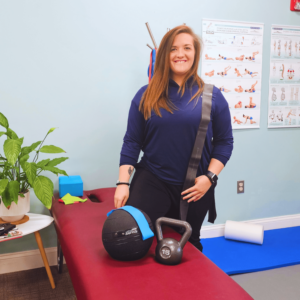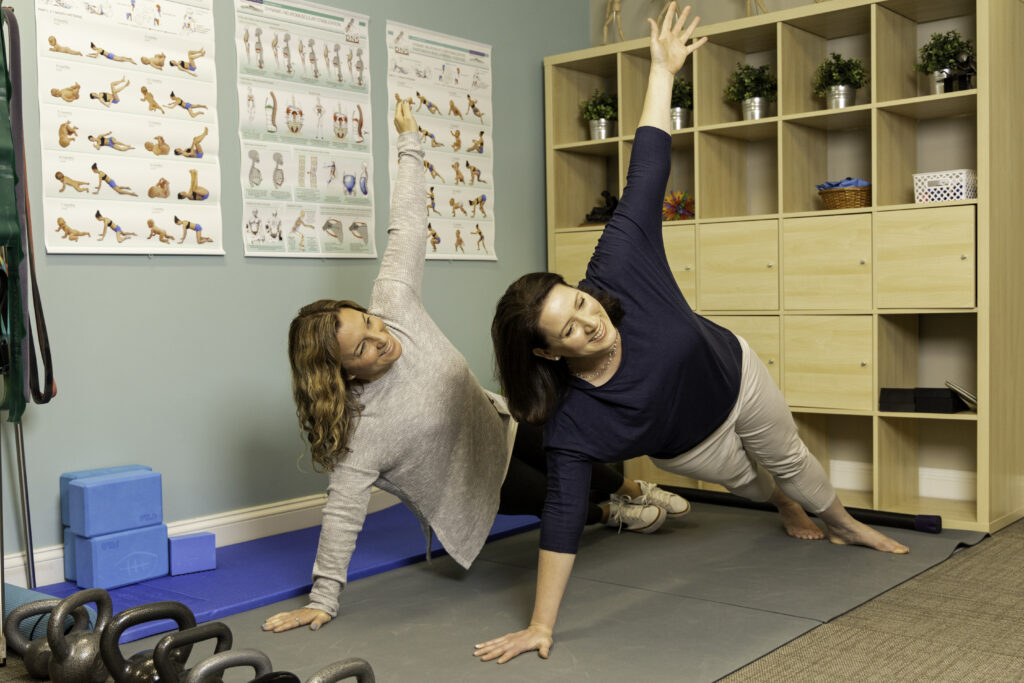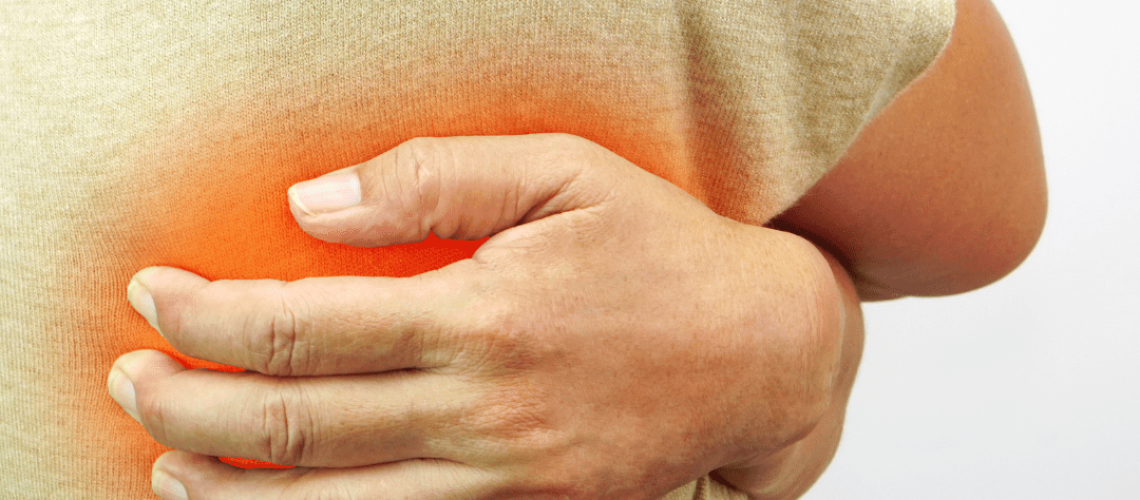Have you ever experienced muscle strain? What are muscle strains, anyway?
A muscle strain is an uncomfortable injury or trauma to the belly of a muscle. Minor strains often result in a stretch to the muscle, like pulling a rubber band. More severe strains can overstretch the muscle to the point where the muscle can have a partial or even complete tear. Strains often occur in the low back or hamstring muscles1, but any muscle in the body is vulnerable to a strain injury!
Strain injuries do not discriminate. Many athletes, active lifestyles, and sedentary individuals suffer from muscular strains. They can occur with repetitive or overuse injuries like running or throwing a baseball, or sudden onset situations such as lifting a heavy box. Many people often describe a muscle strain as feeling like a “pulled” muscle, and they are not wrong – a muscle strain often results from a muscle being pulled too hard by outside forces2!
While strains occur to muscles, they have a cousin you may know as well: the sprain. Sprains have a similar stretching mechanism of injury, but sprains happen to ligaments instead of muscles. For the sake of this article, we will keep it simple and discuss muscular strains; however, an injury is sometimes also considered a sprain/strain because there may be a strain to the muscle and a concurrent sprain of ligaments at the joint.
Muscular strains can be put into two categories: chronic overuse, and acute traumatic strains.
An overuse strain can be confusing at first because there is no single “event” that can be pinpointed that resulted in pain or injury. A traumatic strain injury, on the other hand, often has a single and significant event resulting in injury; think of lifting a TV, and suddenly, your low back goes into spasm! Ouch!
Overuse Strain (Chronic)
The Cumulative Injury Cycle

The Cumulative Injury Cycle3 represents the process in which overuse injuries and pain may occur. This cycle is not limited to a particular activity, but anything you do repetitively!
The chronic cycle begins with Overwork, such as the long duration of sitting or longer-distance running. Yes, even long periods of sitting can overwork muscle groups in addition to increasing your chances of developing deep vein thrombosis, diabetes, and undoing the benefits of exercise.3 The engagement of muscle groups in the same activity – day in, day out – may lead to muscular imbalances and Weak, Tight, and Tense soft tissues, like muscle.2,3
These weak and/or tight muscles lead to excessive Friction, Pressure, and Tension to the local muscles, ligaments, tendons, and fascia2.
In turn, this results in Decreased Circulation and Swelling and Hypoxia (lack of oxygen) to the area. The lack of proper oxygenation to our soft tissues can result in the formation of Adhesions and/or Scar Tissue to the area, which decreases the strength and mobility of the local structures.
Overworked, weakened muscles, coupled with excessive friction and tension and decreased circulation, result in a vicious cycle that both weakens and tenses muscles and soft tissue. The cycle keeps on churning until the body sends off the alarm system that something is wrong.
At some point in your life, you probably stepped on something painful. You may not have known it was even on the ground, waiting to ambush the bottom of your foot, until you stepped directly on it. Our bodies can act very similarly. We do not know something isn’t working correctly until our internal alarm system goes off. That alarm system comes in the form of pain!
Now that we know how chronic and repetitive injuries can occur with strains, what about severe episodes?
Acute Strain
The dreaded acute or traumatic strain. It is a sudden onset of extreme discomfort or pain, and it can be life-altering for a stretch of time depending on the “grade” of your strain. Strains can come at different levels, known as Grades4; in particular, Grades I, II, and III. Read on to learn more about the different grades or levels of injuries for strains:
Grade I Muscle Strain
In a Grade I muscle strain, the muscle or tendon is overstretched and may have small tears to the muscle, like paper cuts. You may have mild pain with or without swelling. Grade I strain is also called mild muscle strain. For Grade I muscle strain, simple home remedies, such as applying RICE (rest, ice, compression, elevation) therapy may be just enough to manage symptoms. These are usually self-resolving in a small time frame, although can be uncomfortable during the healing process.
Grade II Muscle Strain
Also called moderate muscle strain, Grade II strain occurs when the muscle or its tendon is overstretched with more of the fibers torn. Symptoms may include marked pain with swelling. The area of injury is tender and uncomfortable to the touch and may include bruising. Movement can be difficult to perform because of the level of discomfort and muscle involvement.
Grade III Muscle Strain
Grade III strain, or severe muscle strain, is the most serious among the three grades of muscle strains. Most of the muscle fibers are torn! In some cases, the muscle is completely torn or ruptured, resulting in a potential loss of function. Pain, swelling, tenderness, and bruising are usually present. Movement is usually difficult.
Moderate and severe muscle strains should be seen by a qualified healthcare provider, such as a chiropractor, for a thorough evaluation!
Now that you know about the different levels of muscle strains, what can be done to help prevent this kind of injury in the first place?
Preventative Measures
Here are some corrective strategies to decrease the chances of overuse strain or acute traumatic strain injuries.
Keep in mind, even if everything is as perfect as possible, you still may end up with strains and sprains if your sport or activity is strenuous in nature. Even the best preparation cannot fully prevent injury, but it certainly can cut down on the chances of it happening! Some things we can do are:
- Corrective exercises: This will help improve muscle tightness and weakness that cause strain on your body.
- Micro-breaks: Break up the repetitions of your activity or sport.
- Ergonomics: Well-fitted sporting equipment, changes in exercise gear, or alterations to a work environment may be necessary to reduce the likelihood of injury.
- Proper Technique: Less strain on the body from optimal efficiency and performance.
- Rest and Recovery: Helps get the body back to a steady state and prevents excessive fatigue.
- Equipment: Key to performance, efficiency, and reduction of strain on the body.
Should injury occur regardless of these factors, there are things you can do to ensure your body heals. Anyone can get a strained muscle, and the amount of time you need to fully heal depends on the individual and the type of injury.5
Treatment Options
If a strain injury does occur, there are many treatment options one can consider in addition to the aforementioned PRICE1,4,6 methods. Injury first aid should include
- PEACE and LOVE
- Keep moving as much as possible. You may need to start slow and steady. Often, getting on the ground and doing non-weight bearing movements is a good start.
- If the pain doesn’t subside after a day or two or gets worse with movement, get assessed to rule out significant damage, and guidance on proper therapy and rehabilitation.
It is important to see a doctor if you have a painful sprain or strain to get the appropriate evaluation and treatment. Your knowledgeable chiropractor may also suggest changes to your exercise routine, sports habits, computer or desk setup, or other lifestyle factors to help improve your recovery.
References
- Muscle strains. Mayo Clinic. Retrieved from https://www.mayoclinic.org/diseases-conditions/muscle-strains/symptoms-causes/syc-20450507. Accessed October 2020.
- Walls R.M., et al. General principles of orthopedic injuries. Rosen’s Emergency Medicine: Concepts and Clinical Practice. 9th ed. Philadelphia, Pa.: Elsevier; 2018. https://www.clinicalkey.com. Accessed October 2020.
- Leahy, P.M. Cumulative trauma disorder defined. Retrieved from http://www.sportdc.com/art/leahy_art.shtml. Accessed October 2020.
- Mangusan, D. “Back muscle strains.” Retrieved from http://www.physiotherapynotes.com. Accessed October 2020.
- “Sprains and strains.” National Institute of Arthritis and Musculoskeletal and Skin Diseases. Retrieved October 2020 from: https://www.niams.nih.gov/health-topics/sprains-and-strains
- Sprains, strains and other soft-tissue injuries. American Academy of Orthopaedic Surgeons. Retrieved from https://orthoinfo.aaos.org/en/diseases–conditions/sprains-strains-and-other-soft-tissue-injuries. Accessed October 2020.





